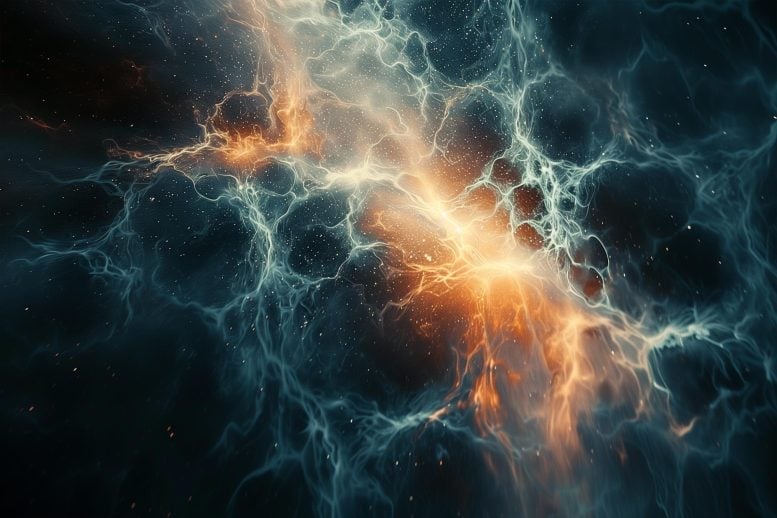
Dark matter and dark energy, making up most of the universe, are elusive forces that shape cosmic structure and expansion. Scientists worldwide, including at Argonne National Laboratory, are using advanced technology to unravel these mysteries. Credit: SciTechDaily.com
What Are Dark Matter and Dark Energy?
There’s something amiss in the cosmos. Mysterious influences seem to be stretching the universe apart and clumping stuff together in unexpected ways, but we can’t see or touch them. Scientists call these influences dark energy and dark matter.
Humans have studied the sky for many thousands of years, and in the last century, scientists have really started to understand how the universe moves and changes under the influence of a force called gravity. Gravity affects everything, including not only matter — a scientific term for stuff — but also light. It’s what pulls our bodies into Earth, and it also works over the vast distances between stars and galaxies.
In this Science 101 video, postdoctoral researchers Gillian Beltz-Mohrmann and Florian Kéruzoré explore two of the biggest mysteries in science: dark matter and dark energy. These strange influences seem to be stretching the universe apart and clumping stuff together in unexpected ways. Together, they make up a whopping 95% of the universe, but because we can’t see or touch them, we don’t know what they are. Researchers around the globe, including scientists at the U.S. Department of Energy’s Argonne National Laboratory, are investigating the nature of dark matter and dark energy through large cosmological surveys, particle physics experiments and advanced computing and simulation.
Gravity plays a crucial role in how galaxies form and move around. As scientists learn more about the universe, they find that much of the behavior of galaxies wouldn’t make sense unless there were a huge amount of invisible matter present — way more matter than we have yet to uncover. This invisible — or dark — matter exerts an extra gravitational pull. If it did not exist, some galaxies would fly apart, and some wouldn’t have formed at all.
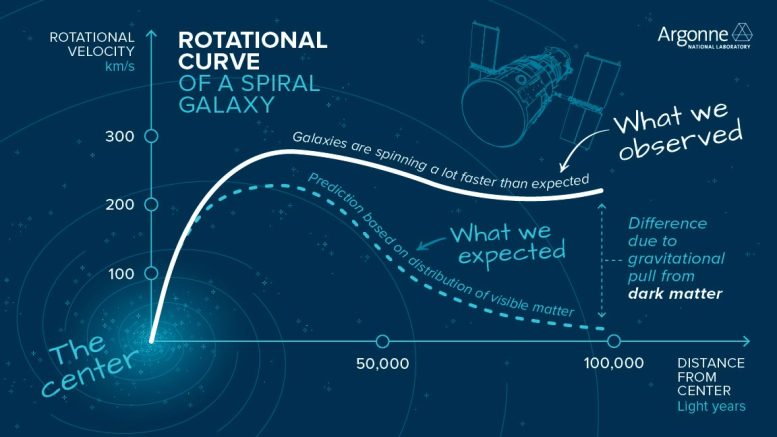
This graph shows a realistic example of how dark matter can cause outer regions of spiral galaxies to rotate faster than they would if they were only under the influence of gravity from visible matter. This discrepancy suggests that dark matter exists, exerting an additional gravitational pull. Credit: Argonne National Laboratory
We call it “dark” because we can’t see it. Unlike visible matter (matter we can see, including stars, planets, water, etc.), it doesn’t appear to release or absorb light, or interact with other matter except through gravity. We know where it should be, but nothing is there when we look. It’s like seeing ripples in a pond, but not being able to see what caused them.
Meanwhile, something else is driving the universe to expand faster and faster. The universe, as far as we can tell, has been expanding since it began 13.8 billion years ago. The space between objects is ever-increasing, as if space itself is being stretched apart like the surface of a balloon as it’s inflated. Scientists expected that the speed of this expansion would slow down with time, but instead, they’ve discovered the opposite. Around five billion years ago, the universe’s expansion started to speed up. We don’t know what’s causing this accelerated expansion, but we named it dark energy.
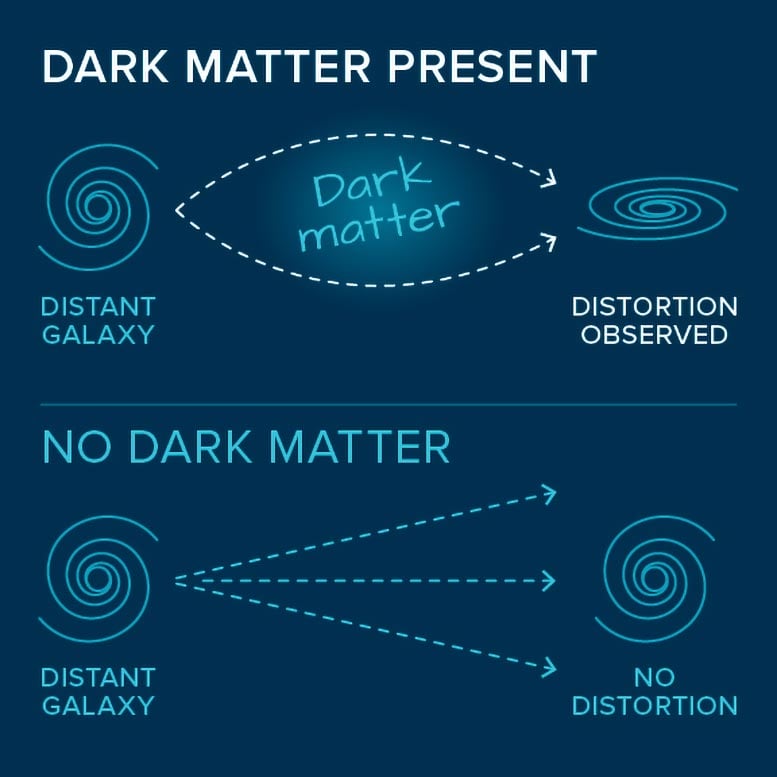
Gravitational pull from dark matter can bend light traveling from distant galaxies, causing their images to appear distorted when they reach our telescopes. This phenomenon, called gravitational lensing, reveals dark matter’s presence even though we can’t see it. Credit: Argonne National Laboratory
From what scientists can tell, visible matter makes up only 5% of the universe. Dark matter and dark energy are believed to make up the other 27% and 68%, respectively. In other words, what we know well — visible matter — doesn’t even come close to explaining the nature of the vast majority of the universe.
So, how are scientists trying to solve this mystery? What are dark matter and dark energy?
In order to find out, we need data, and lots of it. To collect this data, scientists build giant telescopes and cameras. These include the Hubble and James Webb Space Telescopes in outer space; the South Pole Telescope in Antarctica; the Dark Energy Spectroscopic Instrument in Arizona; and the Dark Energy Survey and forthcoming Vera C. Rubin Observatory in Chile.
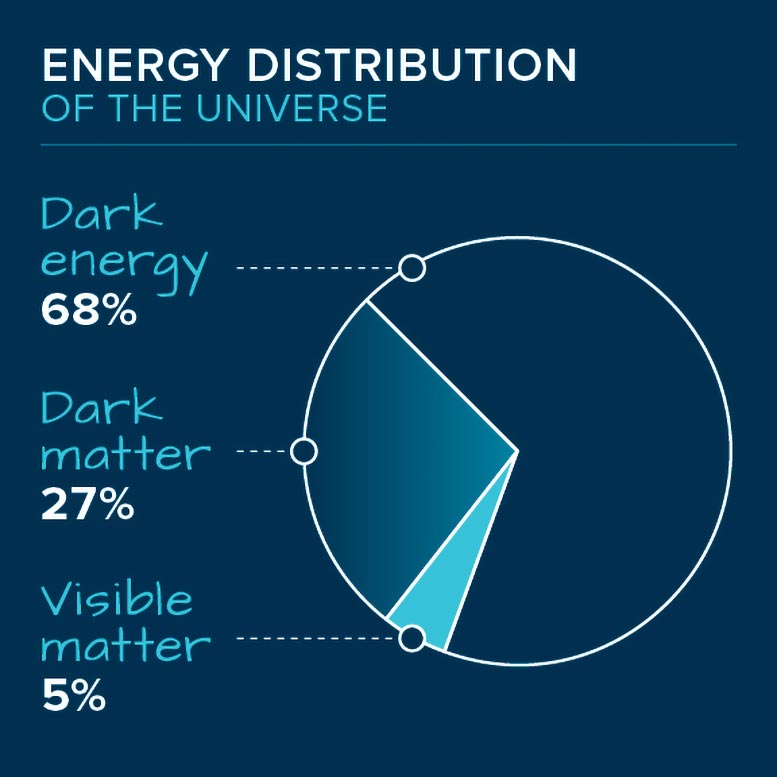
The universe is predominantly composed of dark energy and dark matter. Visible matter (everything we can see, including stars and planets) only makes up around 5% of the universe. Scientists are investigating the nature of the unknown 95%. Credit: Argonne National Laboratory
These sensitive instruments survey the sky to reveal the location and movement of galaxies in the universe over time. Supercomputers help scientists run detailed simulations of the universe as well as analyze the data from the telescopes. In addition to looking at the sky for answers, scientists are also building sensitive detectors to directly search for dark matter on Earth.
Researchers at the U.S. Department of Energy’s Argonne National Laboratory contribute to the study of dark matter and dark energy through participation in these large cosmological surveys, particle physics experiments and by using advanced computing and simulation. Information from these surveys and simulations helps scientists to create maps of where dark matter exists and provides clues about the nature of dark energy
As our telescopes, supercomputers, and other instruments get more sophisticated, we find more and more evidence that we are missing something big, and scientists are working to understand what it might be. The work of Argonne scientists is bringing the world closer to unraveling these cosmic mysteries.

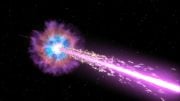







You’ve got it all wrong, especially with dark energy. Both special and general relativity show us that time slows and space “shrinks”. If time goes faster then space gets bigger. This is all in the math’ of the theory. Why don’t you take time as fundamental and space as merely the effect of time passing? It’s quite simple and logical if you think about it. That way, you get quickening time and cosmic expansion. You know, just like we observe right?
It is naive to invent some mysterious energy that drives expansion when the answer is staring us in the face. Red shift has two causes you know. One is the Doppler effect but there is another we are neglecting – the quickening of time. Look into the past and all the clocks went slower, giving us a red shift of everything. Come on, wise up. Think!
My coming second and third cosmology books will explain the ultimate origin and nature of Dark Matter and Dark Energy.
I agree you’ve gotten it all wrong, but for other reasons. Check out the YouTubes “Dark Matter – A String Theory Way” and “Dark Energy – A String Theory Way”.
Dark matter and dark energy are just lame excuses made by physicists who can’t explain why their models don’t work.
They are theories based on a set of very questionable postulates. That’s not only a simple explanation for what is called Dark Matter and Dark Energy, but it’s a very good thing to remember about any scientific finding. There is no such thing as a scientific fact. Although a lot of people would like to believe things scientists say are facts, they’re not. If you want something to believe, go to church. Dark Matter and Dark Energy are some of the most dubious scientific theories that came out of the late 20th Century.
Dark matter and dark energy are sciences mad scramble to not be wrong. You see without these theorized things there .O’Dell of gravity does not work math.atically. so they invented these things as variables to make the math work.
Too many uneducated people in these comments
Excellent article. Great reading.